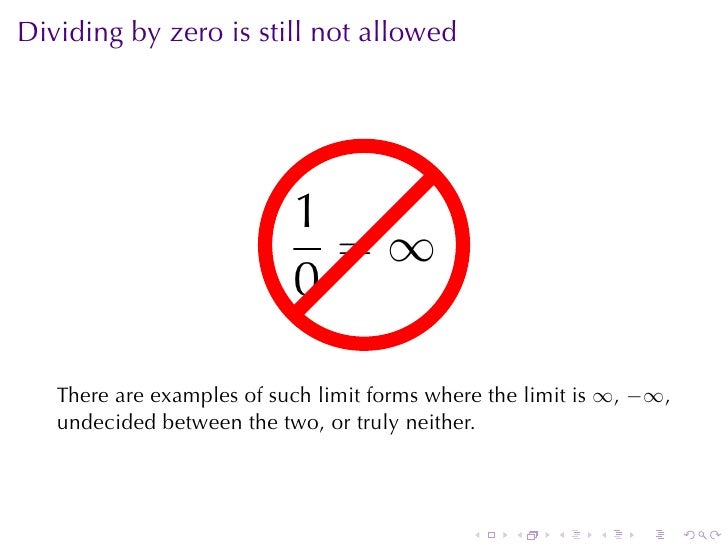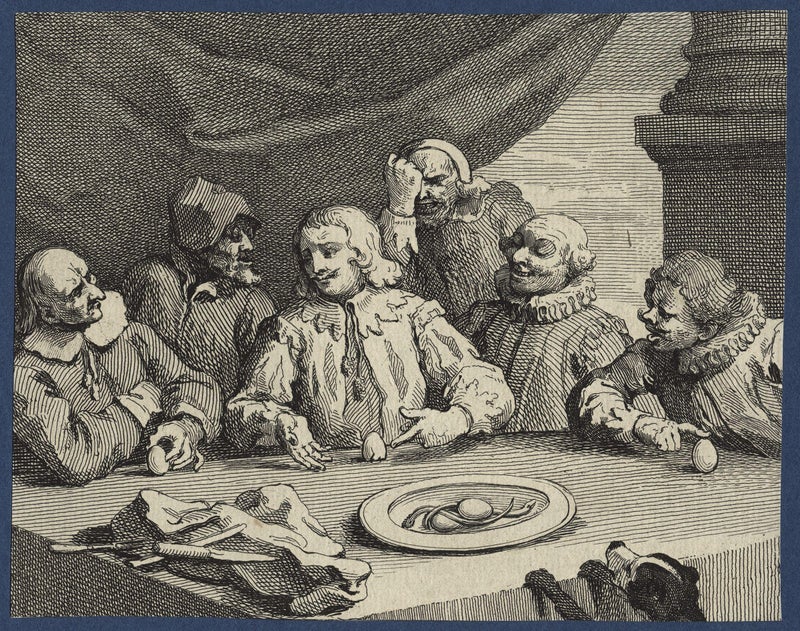「ゼロで割る」ことの意味
明けましておめでとうございます。
正月の暇つぶしに少々駄文を。少し前に話題になった「ゼロで割る」問題ですが、
正月の暇つぶしに少々駄文を。少し前に話題になった「ゼロで割る」問題ですが、
小学校で「0で割ったら0」という内容を教えているところがあるようです。自分の学校でもそうだ、という方がいらっしゃいましたらコメント欄に市区単位で場所をかいてください
むろん、数学的な答えは「解なし(不定)」、「∞または-∞」で正しいのですが。
「ゼロで割る」を物理に持ってくるとまたちょっと違った深い意味を持って来ます。
なので ↑ で終わらせるのは少々もったいないなぁ..と。
「ゼロで割る」を物理に持ってくるとまたちょっと違った深い意味を持って来ます。
なので ↑ で終わらせるのは少々もったいないなぁ..と。
相対性理論に潜む「ゼロで割る」問題
さて、物理で見られる「ゼロで割る」パターンですが。
典型的なケースとしてアインシュタインの重力方程式を見て行きましょう。
典型的なケースとしてアインシュタインの重力方程式を見て行きましょう。
一般相対性理論 出典: フリー百科事典『ウィキペディア(Wikipedia)』 移動: 案内 、 検索 質量(地球)が空間の幾何学をゆがめている様子を2次元に落とし込んで描いたところ 歪んだ幾何学自体が重力と解釈できる 一般相対性理論 アインシュタイン方程式 入門 数学的定式化 関連書籍 基本概念 特殊相対性理論 等価原理 世界線 · リーマン幾何学 現象 ケプラー問題 · レンズ · 重力波 …
シュヴァルツシルトの解 出典: フリー百科事典『ウィキペディア(Wikipedia)』 移動: 案内 、 検索 シュヴァルツシルトの解 (シュヴァルツシルトのかい)あるいは シュヴァルツシルト計量 ( Schwarzschild metric ) は、 一般相対性理論 における アインシュタイン方程式 (重力場の方程式)の解の 1 つで、 カール・シュヴァルツシルト が 1916年 に導き出した…
重力方程式は「物質を空間に置いたら、その重力はどうなるか?」を計算するための式です。
で、シュバルツシルト解は「静止した物質が1つだけポツンとあったら?」という最も単純な条件のもとで導き出された重力方程式の解です。ブラックホールの存在を予言した解として有名ですね。
詳しい説明は省きますが、このシュバルツシルト解に「ゼロで割る」問題が潜んでいます。
単純に言えば、
で、シュバルツシルト解は「静止した物質が1つだけポツンとあったら?」という最も単純な条件のもとで導き出された重力方程式の解です。ブラックホールの存在を予言した解として有名ですね。
詳しい説明は省きますが、このシュバルツシルト解に「ゼロで割る」問題が潜んでいます。
単純に言えば、
重心からゼロ距離の場合、重力はどうなるのか?
ということです。
質量m、重心からの距離rとした場合、シュバルツシルト解にはm/rを計算する項が含まれるのでr=0の時に導かれる重力は「解なし」もしくは「無限大」となります。
もし仮に重力が無限大になるとしても、無限の重力エネルギーが存在することになってしまい、これはエネルギー保存則が破綻してしまうことを意味します。
つまり物質の重心においては、
質量m、重心からの距離rとした場合、シュバルツシルト解にはm/rを計算する項が含まれるのでr=0の時に導かれる重力は「解なし」もしくは「無限大」となります。
もし仮に重力が無限大になるとしても、無限の重力エネルギーが存在することになってしまい、これはエネルギー保存則が破綻してしまうことを意味します。
つまり物質の重心においては、
うちゅうの ほうそくが みだれる!
ということになってしまいます。
この大いなる矛盾について、現代の物理学者たちはどう説明しているのかと申しますと。
この大いなる矛盾について、現代の物理学者たちはどう説明しているのかと申しますと。
ブラックホールの事象の地平線内部は光さえも逃げられない空間。
なので、こちらからはどうやっても何が起こってるか知りようがない、知りようがないものは考える必要はないんだよHAHAHA
宇宙検閲官仮説 出典: フリー百科事典『ウィキペディア(Wikipedia)』 移動: 案内 、 検索 宇宙検閲官仮説 (うちゅうけんえつかんかせつ)または、 宇宙検閲仮説 (うちゅうけんえつかせつ、cosmic censorship hypothesis)とは、 一般相対性理論 研究に登場する 概念 で、 時空 に 裸の特異点 が自然に発生することはないだろう、という ロジャー・ペンローズ が…
..という説明でお茶を濁しておりました。
ところがです。90年代に入りコンピュータシミュレーションによって、事象の地平線の外側(つまりわれわれ人類が存在する通常空間)において重力の特異点が出現するケースがありうる、ということが証明されてしまいました。コンピュータってすごいね!
ところがです。90年代に入りコンピュータシミュレーションによって、事象の地平線の外側(つまりわれわれ人類が存在する通常空間)において重力の特異点が出現するケースがありうる、ということが証明されてしまいました。コンピュータってすごいね!
裸の特異点 出典: フリー百科事典『ウィキペディア(Wikipedia)』 移動: 案内 、 検索 裸の特異点 (はだかのとくいてん、 naked singularity )は、 一般相対性理論 における用語で、 事象の地平面 ( event horizon ) に囲まれていない、 時空 の 特異点 である。 通常、 ブラックホール の特異点は、 光 も出て行くことができない 空間 に囲まれてお…
以上から、一般相対性理論は「常に成り立つ」わけではない、ということがわかります。
ニュートンの古典力学がアインシュタインの相対性理論によって補正されたように。
ゼロ距離に近い量子サイズにおいては、相対論すら修正されるべき「何か」があると考えるべきです。
ニュートンの古典力学がアインシュタインの相対性理論によって補正されたように。
ゼロ距離に近い量子サイズにおいては、相対論すら修正されるべき「何か」があると考えるべきです。
量子重力理論 出典: フリー百科事典『ウィキペディア(Wikipedia)』 移動: 案内 、 検索 標準模型を超える物理 陽子同士を衝突させハドロンジェットと 電子に崩壊することで生成される ヒッグス粒子 を描く LHC CMS検出器 データのシミュレーション結果 標準模型 証拠 階層性問題 ダークマター 宇宙定数問題 強いCP問題 ニュートリノ振動 理論 テクニカラー カルツァ=クライン理論…
この「何か」が現在未完成の「量子重力理論」と呼ばれているもので、その最有力候補、とされているのが少し前ノーベル賞を受賞した南部先生も大きく関わっている「超ひも理論」です。
超弦理論 出典: フリー百科事典『ウィキペディア(Wikipedia)』 移動: 案内 、 検索 この記事の 正確性に疑問 が呈されています。 問題箇所に 信頼できる情報源 を示して、記事の改善にご協力ください。議論は ノート を参照してください。 ( 2007年7月 ) カラビ-ヤウ空間 弦理論 超弦理論 理論 弦理論 ボゾン弦理論 M理論 ( 簡易項目 ) タイプI超弦 · タイプII超…
超ひも理論は非常に有望な「究極の理論」として期待されているのですが、残念ながら現在人類の持てる科学技術力では実験で検証できないため「仮説」の領域に留まっています。
あまりに数学的・抽象的な概念を持つ理論のため、
あまりに数学的・抽象的な概念を持つ理論のため、
もはや哲学の領域
と陰口をたたかれることもしばしばです。で、
結論
重心からゼロ距離の場合、重力はどうなるのか?
という最初の問いですが。
量子重力理論が正しいとするならば、時間・空間は連続的ではなく離散的なモノ(つまり最小単位が存在する)ことになりますので、
量子重力理論が正しいとするならば、時間・空間は連続的ではなく離散的なモノ(つまり最小単位が存在する)ことになりますので、
時間・空間が取り得る最小単位(おそらくプランク長程度)以下になることはない、とみなすことができる。よって「ゼロ距離」という物理量は存在しないと考えてよい。
というのがその解答になるのではないかと。
..以上、いかがでしたでしょうか?お楽しみ頂ければ幸いです。それでは。https://matome.naver.jp/odai/2135710882669605901
..以上、いかがでしたでしょうか?お楽しみ頂ければ幸いです。それでは。https://matome.naver.jp/odai/2135710882669605901
とても興味深く読みました:ゼロ除算の発見4周年を超えました:
\documentclass[12pt]{article}
\usepackage{latexsym,amsmath,amssymb,amsfonts,amstext,amsthm}
\numberwithin{equation}{section}
\begin{document}
\title{\bf Announcement 409: Various Publication Projects on the Division by Zero\\
(2018.1.29.)}
\author{{\it Institute of Reproducing Kernels}\\
Kawauchi-cho, 5-1648-16,\\
Kiryu 376-0041, Japan\\
}
\date{\today}
\maketitle
The Institute of Reproducing Kernels is dealing with the theory of division by zero calculus and declares that the division by zero was discovered as $0/0=1/0=z/0=0$ in a natural sense on 2014.2.2. The result shows a new basic idea on the universe and space since Aristoteles (BC384 - BC322) and Euclid (BC 3 Century - ), and the division by zero is since Brahmagupta (598 - 668 ?).
In particular, Brahmagupta defined as $0/0=0$ in Brhmasphuasiddhnta (628), however, our world history stated that his definition $0/0=0$ is wrong over 1300 years, but, we showed that his definition is suitable.
For the details, see the references and the site: http://okmr.yamatoblog.net/
We wrote two global book manuscripts \cite{s18} with 154 pages and \cite{so18} with many figures for some general people. Their main points are:
\begin{itemize}
\item The division by zero and division by zero calculus are new elementary and fundamental mathematics in the undergraduate level.
\item They introduce a new space since Aristoteles (BC384 - BC322) and Euclid (BC 3 Century - ) with many exciting new phenomena and properties with general interest, not specialized and difficult topics. However, their properties are mysterious and very attractive.
\item The contents are very elementary, however very exciting with general interest.
\item The contents give great impacts to our basic ideas on the universe and human beings.
\end{itemize}
Meanwhile, the representations of the contents are very important and delicate with delicate feelings to the division by zero with a long and mysterious history. Therefore, we hope the representations of the division by zero as follows:
\begin{itemize}
\item
Various book publications by many native languages and with the author's idea and feelings.
\item
Some publications are like arts and some comic style books with pictures.
\item
Some T shirts design, some pictures, monument design may be considered.
\end{itemize}
The authors above may be expected to contribute to our culture, education, common communications and enjoyments.
\medskip
For the people having the interest on the above projects, we will send our book sources with many figure files.
\medskip
How will be our project introducing our new world since Euclid?
\medskip
Of course, as mathematicians we have to publish new books on
\medskip
Calculus, Differential Equations and Complex Analysis, at least and soon, in order to {\bf correct them} in some complete and beautiful ways.
\medskip
Our topics will be interested in over 1000 millions people over the world on the world history.
\bibliographystyle{plain}
\begin{thebibliography}{10}
\bibitem{kmsy}
M. Kuroda, H. Michiwaki, S. Saitoh, and M. Yamane,
New meanings of the division by zero and interpretations on $100/0=0$ and on $0/0=0$,
Int. J. Appl. Math. {\bf 27} (2014), no 2, pp. 191-198, DOI: 10.12732/ijam.v27i2.9.
\bibitem{ms16}
T. Matsuura and S. Saitoh,
Matrices and division by zero $z/0=0$,
Advances in Linear Algebra \& Matrix Theory, {\bf 6}(2016), 51-58
Published Online June 2016 in SciRes. http://www.scirp.org/journal/alamt
\\ http://dx.doi.org/10.4236/alamt.2016.62007.
\bibitem{ms18}
T. Matsuura and S. Saitoh,
Division by zero calculus and singular integrals. (Submitted for publication)
\bibitem{mms18}
T. Matsuura, H. Michiwaki and S. Saitoh,
$\log 0= \log \infty =0$ and applications. Differential and Difference Equations with Applications. Springer Proceedings in Mathematics \& Statistics.
\bibitem{msy}
H. Michiwaki, S. Saitoh and M.Yamada,
Reality of the division by zero $z/0=0$. IJAPM International J. of Applied Physics and Math. {\bf 6}(2015), 1--8. http://www.ijapm.org/show-63-504-1.html
\bibitem{mos}
H. Michiwaki, H. Okumura and S. Saitoh,
Division by Zero $z/0 = 0$ in Euclidean Spaces,
International Journal of Mathematics and Computation, {\bf 2}8(2017); Issue 1, 2017), 1-16.
\bibitem{osm}
H. Okumura, S. Saitoh and T. Matsuura, Relations of $0$ and $\infty$,
Journal of Technology and Social Science (JTSS), {\bf 1}(2017), 70-77.
\bibitem{os}
H. Okumura and S. Saitoh, The Descartes circles theorem and division by zero calculus. https://arxiv.org/abs/1711.04961 (2017.11.14).
\bibitem{o}
H. Okumura, Wasan geometry with the division by 0. https://arxiv.org/abs/1711.06947 International Journal of Geometry.
\bibitem{os18}
H. Okumura and S. Saitoh,
Applications of the division by zero calculus to Wasan geometry.
(Submitted for publication).
\bibitem{ps18}
S. Pinelas and S. Saitoh,
Division by zero calculus and differential equations. Differential and Difference Equations with Applications. Springer Proceedings in Mathematics \& Statistics.
\bibitem{romig}
H. G. Romig, Discussions: Early History of Division by Zero,
American Mathematical Monthly, Vol. {\bf 3}1, No. 8. (Oct., 1924), pp. 387-389.
\bibitem{s14}
S. Saitoh, Generalized inversions of Hadamard and tensor products for matrices, Advances in Linear Algebra \& Matrix Theory. {\bf 4} (2014), no. 2, 87--95. http://www.scirp.org/journal/ALAMT/
\bibitem{s16}
S. Saitoh, A reproducing kernel theory with some general applications,
Qian,T./Rodino,L.(eds.): Mathematical Analysis, Probability and Applications - Plenary Lectures: Isaac 2015, Macau, China, Springer Proceedings in Mathematics and Statistics, {\bf 177}(2016), 151-182. (Springer) .
\bibitem{s17}
S. Saitoh, Mysterious Properties of the Point at Infinity, arXiv:1712.09467 [math.GM](2017.12.17).
\bibitem{s18}
S. Saitoh, Division by zero calculus (154 pages: draft): http//okmr.yamatoblog.net/
\bibitem{so18}
S. Saitoh and H. Okumura, Division by Zero Calculus in Figures -- Our New Space --
\bibitem{ttk}
S.-E. Takahasi, M. Tsukada and Y. Kobayashi, Classification of continuous fractional binary operations on the real and complex fields, Tokyo Journal of Mathematics, {\bf 38}(2015), no. 2, 369-380.
\end{thebibliography}
\end{document}
List of division by zero:
\bibitem{os18}
H. Okumura and S. Saitoh,
Remarks for The Twin Circles of Archimedes in a Skewed Arbelos by H. Okumura and M. Watanabe, Forum Geometricorum.
Saburou Saitoh, Mysterious Properties of the Point at Infinity、
arXiv:1712.09467 [math.GM]
arXiv:1712.09467 [math.GM]
Hiroshi Okumura and Saburou Saitoh
The Descartes circles theorem and division by zero calculus. 2017.11.14
L. P. Castro and S. Saitoh, Fractional functions and their representations, Complex Anal. Oper. Theory {\bf7} (2013), no. 4, 1049-1063.
M. Kuroda, H. Michiwaki, S. Saitoh, and M. Yamane,
New meanings of the division by zero and interpretations on $100/0=0$ and on $0/0=0$, Int. J. Appl. Math. {\bf 27} (2014), no 2, pp. 191-198, DOI: 10.12732/ijam.v27i2.9.
T. Matsuura and S. Saitoh,
Matrices and division by zero z/0=0,
Advances in Linear Algebra \& Matrix Theory, 2016, 6, 51-58
Published Online June 2016 in SciRes. http://www.scirp.org/journal/alamt
\\ http://dx.doi.org/10.4236/alamt.2016.62007.
T. Matsuura and S. Saitoh,
Division by zero calculus and singular integrals. (Submitted for publication).
T. Matsuura, H. Michiwaki and S. Saitoh,
$\log 0= \log \infty =0$ and applications. (Differential and Difference Equations with Applications. Springer Proceedings in Mathematics \& Statistics.)
H. Michiwaki, S. Saitoh and M.Yamada,
Reality of the division by zero $z/0=0$. IJAPM International J. of Applied Physics and Math. 6(2015), 1--8. http://www.ijapm.org/show-63-504-1.html
H. Michiwaki, H. Okumura and S. Saitoh,
Division by Zero $z/0 = 0$ in Euclidean Spaces,
International Journal of Mathematics and Computation, 28(2017); Issue 1, 2017), 1-16.
H. Okumura, S. Saitoh and T. Matsuura, Relations of $0$ and $\infty$,
Journal of Technology and Social Science (JTSS), 1(2017), 70-77.
S. Pinelas and S. Saitoh,
Division by zero calculus and differential equations. (Differential and Difference Equations with Applications. Springer Proceedings in Mathematics \& Statistics).
S. Saitoh, Generalized inversions of Hadamard and tensor products for matrices, Advances in Linear Algebra \& Matrix Theory. {\bf 4} (2014), no. 2, 87--95. http://www.scirp.org/journal/ALAMT/
S. Saitoh, A reproducing kernel theory with some general applications,
Qian,T./Rodino,L.(eds.): Mathematical Analysis, Probability and Applications - Plenary Lectures: Isaac 2015, Macau, China, Springer Proceedings in Mathematics and Statistics, {\bf 177}(2016), 151-182. (Springer) .
再生核研究所声明371(2017.6.27)ゼロ除算の講演― 国際会議 https://sites.google.com/site/sandrapinelas/icddea-2017 報告
1/0=0、0/0=0、z/0=0
http://ameblo.jp/syoshinoris/entry-12276045402.html
1/0=0、0/0=0、z/0=0
http://ameblo.jp/syoshinoris/entry-12263708422.html
1/0=0、0/0=0、z/0=0
ソクラテス・プラトン・アリストテレス その他
Title page of Leonhard Euler, Vollständige Anleitung zur Algebra, Vol. 1 (edition of 1771, first published in 1770), and p. 34 from Article 83, where Euler explains why a number divided by zero gives infinity.
私は数学を信じない。 アルバート・アインシュタイン / I don't believe in mathematics. Albert Einstein→ゼロ除算ができなかったからではないでしょうか。
ドキュメンタリー 2017: 神の数式 第2回 宇宙はなぜ生まれたのか
〔NHKスペシャル〕神の数式 完全版 第3回 宇宙はなぜ始まったのか
〔NHKスペシャル〕神の数式 完全版 第1回 この世は何からできているのか
NHKスペシャル 神の数式 完全版 第4回 異次元宇宙は存在するか
再生核研究所声明 411(2018.02.02): ゼロ除算発見4周年を迎えて
ゼロ除算の論文
Mysterious Properties of the Point at Infinity
Mysterious Properties of the Point at Infinity
Algebraic division by zero implemented as quasigeometric multiplication by infinity in real and complex multispatial hyperspaces
Author: Jakub Czajko, 92(2) (2018) 171-197
 WSN 92(2) (2018) 171-197
WSN 92(2) (2018) 171-197
Author: Jakub Czajko, 92(2) (2018) 171-197
2018.3.18.午前中 最後の講演: 日本数学会 東大駒場、函数方程式論分科会 講演書画カメラ用 原稿
The Japanese Mathematical Society, Annual Meeting at the University of Tokyo. 2018.3.18.
https://ameblo.jp/syoshinoris/entry-12361744016.html より
The Japanese Mathematical Society, Annual Meeting at the University of Tokyo. 2018.3.18.
https://ameblo.jp/syoshinoris/entry-12361744016.html より








































0 件のコメント:
コメントを投稿